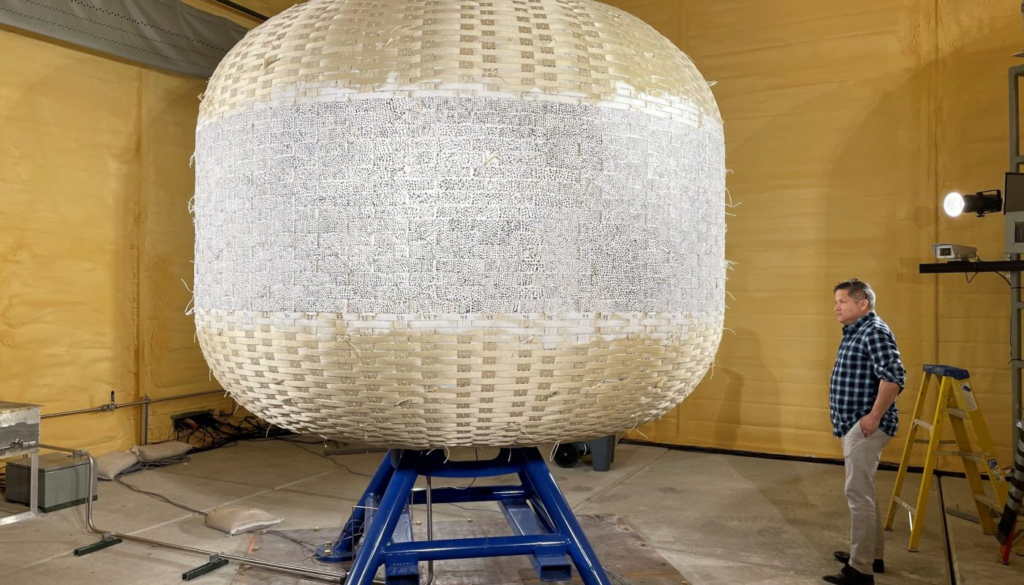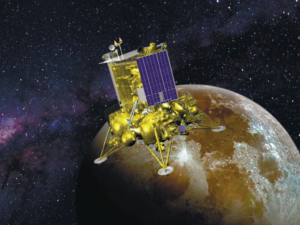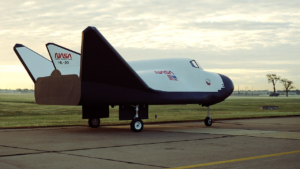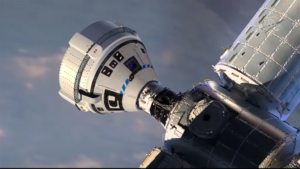
What Life Is Like Inside The Future of Space Habitation
Today in 2023, despite advances being made throughout the space industry, it still costs thousands of dollars on average to launch a single kilogram into space. Not to mention the limited payload capacity of even some of the biggest rockets in the world such as SpaceX’s Falcon Heavy, which features a fairing size of over 13 meters in length and over 5 meters in width. Compare this to the ISS which stretches a massive 109 meters in length, and the problem becomes evident.
When trying to create space habitation and stations even just in low Earth orbit, these structures are often limited by current launch vehicles. An expensive process that also takes quite a bit more time in the long run. These reasons among others are why Sierra Space has been developing a large inflatable habitat that measures over 8 by 8 meters in size.
Recently, the company has completed a host of different tests that NASA is requiring to make sure it’s not only viable, but safe for a lengthy human presence in space. Here I will go more in-depth into the design of the LIFE Habitat, what the inside looks like, recent testing, and more.
Life Inside LIFE

When fully inflated, the LIFE module provides enough space for three separate floors in a single habitat. To put the size in perspective, the pressurized volume of LIFE is 300 cubic meters, or about 1/3 of the pressurized volume on the International Space Station. This means that just three of these habitats would roughly make up the same pressurized volume of the entire ISS.
Focusing more on the inside, the LIFE habitat would fill its three floors with everything a crew of four astronauts would need to live in space and perform science missions. This includes science labs, robotics work stations, medical and sick bay, sleep and hygiene quarters, galley, exercise equipment, Sierra Space’s Astro Garden plant growth system, and ample storage room for crew supplies. Each floor at the center would feature a ceiling height of around 9 feet or around 2.75 meters and close to the same diameter.
The LIFE habitat is currently being designed to support four crew members living and working on long-duration missions, such as those to Mars. Sierra Space highlights however that it comfortably houses six for missions in LEO, but can accommodate 12 crew for shorter periods of time such as those during which crew members transition. Because of its modular nature, additional habitats can be joined to each other to accommodate more crew, or for a variety of other purposes. The only main solid and non inflatable component is the vestibule which would be used to connect to other segments and leave or enter the habitat.
Starting years ago, Sierra Space set up a full size mockup of the habitat including interior furnishing with various equipment that you would expect on an actual mission. Looking at an image of the second floor, you can see a crew work area with some computers and shelving. The floor and ceiling are also secured in place likely using sectional pieces that can be launched in a compact format for assembly in space. While the main habitat is inflatable, practically everything you put in it is not. In another image, it shows off the company’s Astro garden near the access hatch. Finally, moving up to the third floor, a look at the crew living area and galley table shows off the impressive space available.
Once in space, all of the air and water required to survive would be delivered by logistics carriers to the habitat, where it’s then stored until needed. The LIFE habitat has life support systems that regulate the air to maintain proper pressure, temperature, humidity, and oxygen levels. These life support systems recycle some of the air and water that is used to reduce the amount that has to be delivered to the habitat. In terms of getting it into space, the LIFE habitat is specifically designed to launch on commercial launch vehicles with a 5m fairing, providing multiple, low-cost launch options. It can also launch on the Space Launch System (SLS) since it expands only after it is on-orbit, making it easier and less expensive to transport. Once fully inflated, work would be done to outfit it with everything listed prior making it a relatively massive habitat in space.
New Testing

Before the LIFE Habitat can be sent into space and provide humans with a place to stay, a lot of testing is needed. Being that this specific habitat is not a solid metal structure, the testing it goes through is very unique and often ends with a bang.
However, before looking at these recent tests, we need to go over the materials being used on both the inside and outside. The LIFE habitat prototype is constructed of several soft goods layers, starting with the inner layer, called the bladder, which is made of urethane and is designed to keep the air inside the habitat without leaking. Next is the pressure shell layer, known as the restraint layer, this is a Vectran fabric weave that is strong enough to withstand the internal pressure needed for the crew to live & work comfortably in space. They point out that this specific fabric weave is stronger than steel. Finally, there are the outer layers consisting of Micro Meteoroid Orbital Debris (MMOD) and Multi-Layer Insulation (MLI) which provide orbital debris and thermal protection. All of these layers together create a habitat that holds air, protects against radiation, and can withstand the impact of orbital debris.
For months now, Sierra Space has been providing quite frequent updates regarding LIFE Habitat testing. Just yesterday the company tweeted saying, “We have successfully performed a month-long Creep test on LIFE, demonstrating the design has a predicted life far greater than 60 years. Thanks to a Space Act Agreement with #NASA, we will expand our collaborative environment with @NASA_Marshall.”
Specifically, the company’s LIFE testing campaign, a combined effort with NASA test engineers, passed another milestone on the path to building a full-scale habitat product line. The company also announced that it signed a new Space Act Agreement for an expanded partnership with NASA’s Marshall Space Flight Center (MSFC), which is expected to further accelerate LIFE development.
In February, Sierra Space performed a month-long Accelerated Systematic Creep (ASC) test on LIFE – the first milestone in its 2023 testing campaign. Engineers loaded a one-third-scale version of the inflatable habitat with a sustained amount of pressure over an extended period until it failed. Per NASA’s recommended guidelines for inflatable softgoods certification, the test reached its goal of generating an additional data point – pressure and time to burst – which can be used to estimate the life of the primary pressure shell structure. Shawn Buckley, Sierra Space Cheif Engineer for LIFE said, “Our testing campaign has demonstrated that our LIFE habitat pressure shell design has a predicted life of far greater than 60 years – or 525,600 hours – based on Sierra Space’s 15-year on-orbit life requirement and the applied 4x safety factor. We are obviously simulating pressures well in excess of the norm. Test after (extreme) test, we continue to exceed our program requirements, validating that LIFE’s design, manufacturing, and assembly methods are consistent and repeatable.”
Just a few months prior in January of this year, Sierra Space completed a third stress test – this time for duration – exceeding NASA certification requirements and demonstrating the inflatable structure’s integrity for sustaining human life in space for long periods of time. This specific assessment, called an Accelerated Systematic Creep Test, was a similar destructive materials testing method by which test engineers loaded the test unit with a sustained amount of pressure over time until it failed. The unit’s “softgoods” pressure shell burst after over 150 hours, exceeding NASA’s short-term, recommended creep duration target of 100 hours.
As far as what’s next, Sierra Space said in a statement that the upcoming series of one-third-scale LIFE certification tests will focus on inserting hard structures into the pressure shell and correlating the results to previous tests. Sierra Space also anticipates moving toward full-scale LIFE habitat tests later this year. Assuming these future full scale ground tests provide promising results, one of the next steps will be actually launching a LIFE habitat into space to further test what it’s capable of. In the latter half of this decade, Sierra Space will be responsible for providing multiple of these habitats for the Orbitla Reef space station in low Earth orbit.
Thanks to the new agreement with NASA, Sierra Space will expand its collaborative environment with Marshall Space Flight Center (MSFC), in Huntsville, Alabama, to continue critical work on LIFE. The agreement supports ongoing design and development of LIFE test articles, including a full-scale engineering mockup – the size of a three-story apartment building – that will move to MSFC from NASA’s Kennedy Space Center. The recent ASC test was performed inside a specially built, climate-controlled building at MSFC, adjacent to the flame trench of the Saturn 1/1B test stand — where NASA tested rockets for the Apollo program. This location is optimum for softgoods inflatable destructive testing in both performance and observation.
Conclusion
Sierra Space is one step closer to having a fully certified and capable inflatable space habitat. Once in orbit, it will feature three separate floors with enough space for a host of different space operations. If successful, we could expect to see it beyond LEO at the Moon or even Mars. We will have to wait and see how it progresses and the impact it has on the space industry.



